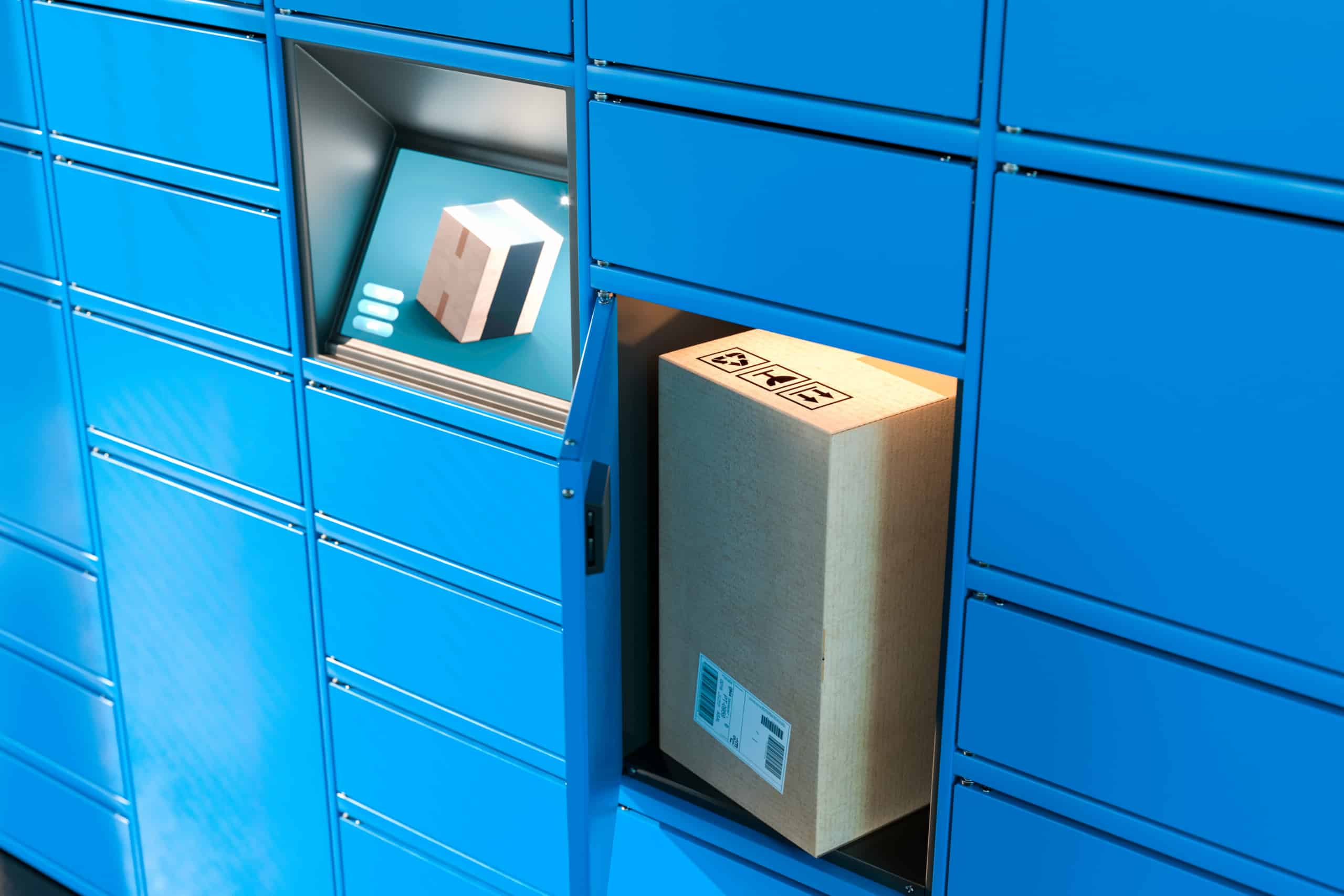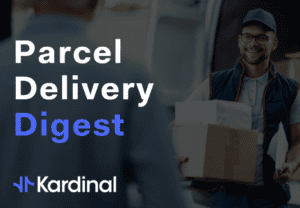From innovation to sustainability: insights from parcel delivery leaders
- April 24, 2024
- 4 mins
In a world marked by shifting consumer preferences and technological advancements, the logistics industry stands at the threshold of transformative changes. As highlighted by industry experts at the recent Leaders in Logistics Summit, innovations such as Generative AI tools, dynamic pricing strategies, and the integration of advanced technologies are reshaping the way logistics operations are conducted. Concurrently, the rise of cross-border e-commerce and the increasing prominence of out-of-home delivery options underscore the need for agile and sustainable logistics solutions.
This article delves into key insights from the summit, exploring the industry’s response to evolving consumer demands and its commitment to sustainability and innovation.
Embracing innovation and consumer-centricity
As consumer demands become increasingly sophisticated, logistics professionals are turning to new technologies to meet these demands and stay competitive. Richard Lim, a UK-based retail market researcher, predicts a widespread adoption of Generative AI tools among online shoppers, particularly the younger generation, revolutionizing how they research purchases. This shift towards AI-driven decision-making aligns with the industry’s endeavor to enhance customer experiences.
Concurrently, Daniel Rueda, CEO of Open Pricer, underscores the importance of adapting pricing strategies dynamically, leveraging sales data to optimize capacity, especially during peak periods.
Moreover, Nabil Malouli, DHL Supply Chain’s SVP eCommerce & Returns Global, emphasizes the integration of advanced technologies, such as robotics, into supply chain orchestration to improve fulfillment processes. This holistic approach to innovation underscores the industry’s commitment to meeting evolving customer requirements while driving operational excellence.
Global market dynamics and cross-border logistics
The emergence of Chinese online marketplaces and the booming trend of recommerce in Europe are reshaping cross-border logistics. Speakers at the summit highlighted the transformative impact of platforms like Temu and Shein, driving significant volumes of air cargo shipments from China to Europe. Additionally, the surge in C2C marketplaces reflects changing consumer behaviors, with an increasing preference for low-cost goods and second-hand items.
Eduardo Herrera, International Director of Correos, emphasized the disruptive influence of these marketplaces, drawing parallels between the success of Temu and the anticipated rise of TikTok in e-commerce. As consumer demand for fast, affordable delivery options grows, carriers face the dual challenge of optimizing efficiency while meeting stringent service level agreements and environmental standards.
Growing out-of-home delivery market
Out-of-home (OOH) delivery options are gaining prominence in the e-commerce landscape, driven by shifting consumer preferences and the evolving demands of the market. OOH deliveries accounted for 15% of total deliveries in 2020, with a forecasted rise to 29% by 2025 on average.

Nick Landon, Chief Commercial Officer at Royal Mail, highlighted the increasing desire among consumers for more OOH choices, reflecting a changing landscape where fast instant delivery competes with cost-conscious bundled options. OOH solutions, such as parcel shops, retailer stores, and parcel lockers, offer enhanced flexibility and convenience to consumers while also contributing to environmental sustainability by reducing traveled kilometers and CO2 emissions. Financially, OOH delivery allows carriers to optimize routes and lower operational costs, often resulting in more affordable delivery rates for customers. The optimization of the location of these OOH points has become a significant concern for carriers due to their potential impact on profitability and service quality.
Sustainability imperatives and fleet decarbonization
The urgency of sustainability initiatives loomed large at the summit, with industry leaders acknowledging the imperative for carriers to lead the charge in reducing environmental impacts. Marina Lussich, Principal Programme Manager, Operations Sustainability Policy & Partnerships at Amazon, outlined the e-commerce giant’s ambitious targets for sustainability across its retailing, transportation, and delivery operations.
On the retailing front, Amazon is actively transitioning to more sustainable practices by shipping parcels in retailer packaging without additional packaging, alongside a commitment to using 100% recyclable packaging materials in Europe. Additionally, the company is making significant changes to its transportation logistics network in Europe, including a substantial shift towards utilizing long-distance rail services and short-sea shipping for linehaul transportation. For last-mile deliveries, Amazon has established micro-mobility depots in 40 cities, facilitating more efficient and environmentally friendly urban delivery operations.
In addition to Amazon, postal operators also face the complex challenge of decarbonizing their fleets while ensuring seamless delivery operations. In a panel discussion on ‘Progressing towards a greener future’, Garret Bridgeman, An Post’s Mail & Parcels chief, stressed the positive commercial case for sustainability and highlighted An Post’s investment in electric vans and plans to switch its linehaul fleet to HVO fuel. Similarly, Jacob Senger, PostNord’s Head of Fleet and Material, discussed the Nordic postal operator’s ambitious goal of having an all-electric fleet of 10,000 vehicles by 2027. However, challenges such as ensuring sufficient power charging infrastructure across large and thinly-populated countries remain. Paul Janacek, Austrian Post’s Head of Group Fleet, emphasized the importance of permanent innovation and continuous testing in the transition towards sustainability, while Edelmiro Castro, Director of Assets and Facilities at Correos, highlighted the need for investment in electric trolleys and the challenges posed by the lack of a sizable electric charging infrastructure in Spain.

Moreover, Sumesh Rahavendra, Chief Strategy and Technology Leader at Pos Malaysia, highlighted the transformation of the postal operator’s fleet. He stressed that the cost of electric vehicles had fallen to similar levels as traditional vehicles, making fleet investments operating costs rather than capital investments. However, both Rahavendra and Lussich emphasized the challenge faced by carriers in calculating their full emissions due to a lack of data or different calculation methods. Despite this challenge, Rahavendra expressed optimism that new solutions would become available in this field, underscoring the industry’s commitment to sustainability and the need for ongoing innovation and collaboration.
Collaborative solutions and urban logistics strategies
Throughout the summit, a recurring theme underscored the significance of collaboration in tackling sustainability challenges and optimizing urban logistics. Johan Peeters, a sustainable city logistics advisor, emphasized the transformative potential of collaborative frameworks, drawing on examples from Belgium where cooperation among operators notably reduced the CO2 footprint of deliveries by 45%.
In a panel discussion focusing on ‘Balancing customer convenience with cost and sustainability’, Alan Barrie, a city logistics expert, cited Barcelona as an example, where a new law mandates carriers to deliver 40% of their last-mile volumes to pick-up points. Additionally, Tadej Visinski, managing director of Direct4.me highlighted Oslo’s approach, where last-mile deliveries are consolidated at a central hub before final delivery, illustrating how legislation can drive consolidation and cooperation among carriers.
The emphasis placed by Holger Winklbauer (CEO of the International Post Corporation) on the importance of carriers responding to customer demands closely aligns with Thiemo van Spellen‘s (Global Accounts Managing Director at Geopost) acknowledgment of consumer reluctance to bear the costs of sustainable logistics. Both underscore the expectation that delivery companies and retailers must take the lead in sustainability efforts. Van Spellen’s mention of Geopost’s collaboration with cities further illustrates the proactive role cities often play in driving sustainability initiatives, suggesting a symbiotic relationship between carriers and urban centers in addressing environmental concerns within the logistics industry. Johan Peeters‘ initiative to develop a freely available ‘toolkit’ of urban logistics measures underscores the collective effort needed to build a greener, more resilient future for e-commerce logistics.
In conclusion, the discussions and insights shared at the Leaders in Logistics Summit illuminate the industry’s dynamic response to the evolving landscape of consumer demands and technological advancements. From embracing innovative solutions like Generative AI tools to prioritizing sustainability initiatives and optimizing urban logistics strategies, stakeholders are actively shaping the future of logistics. As the industry continues to evolve, collaboration, innovation, and a steadfast commitment to consumer-centricity will remain pivotal in driving meaningful change and building a more sustainable and resilient logistics ecosystem.







